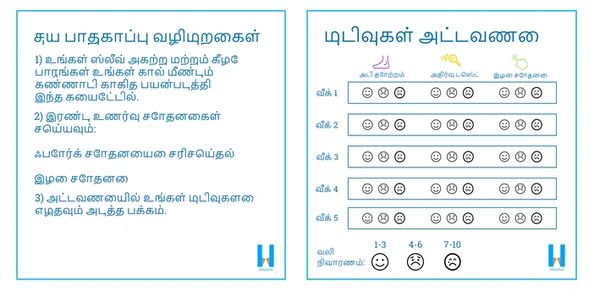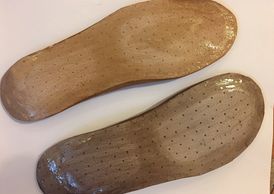Hondadi: Diabetic Foot Ulcer Solution for Sri Lanka
Problem Statement
Baylor College of Medicine, in partnership with the Diabetic Center at Jaffna Teaching Hospital, hosted a Global Health Hackathon earlier this year. Participants were asked to design a solution to enable patients to adhere to diabetic foot prevention strategies, enable patients to perform foot screenings, and offload pressure off the diabetic foot to prevent and heal ulcers.
Project Background
While diabetes affects 1 in 11 adults worldwide, 75% of diabetics reside in low and middle income countries such as Sri Lanka. Diabetics in these countries have the highest amputation rates, with foot ulcers as the leading cause, approximating for ~85% of lower extremity amputations.
Primary risk factors for diabetic foot ulcers consist of inability to offload pressure at the affected area, poor circulation, and infection. Additionally, while the Diabetic Center has over 11,000 registered diabetic patients, there are no trained podiatrists and are very limited in equipment and knowledge of foot screenings.
Project Challenges
Cultural Challenges
- Barefoot travel is common and considered the norm
- Working in the field with footwear is considered a sin, and most common occupation in Sri Lanka is farming
- Over 80% of the population don't wear footwear in and around temple
Foot Care Challenges
- Minimal foot hygiene practices
- No moisturizer use
- No foot support or orthotics
design criteria
Diabetic Foot Prevention Strategies
- Must enable patient to easily adhere to proper daily hygiene
- Must enable patient to test for sensation
- Must protect foot from abrasions, cuts, lacerations, etc
Diabetic Foot Screenings
- Must enable patient to perform daily foot examination
- Must enable patients to track and accurately perform assessments and identify risks
Method to Offload Diabetic Foot
- Must significantly reduce peak plantar pressure in areas of ulceration
- Must avoid high risk side effects and skin irritation
- Must not affect or significantly limit balance ambulation or performance
- Must provide adequate protection for activities of daily life
- Must minimize manufacturing costs
- Must be culturally sensitive
Initial Concept
In the first round of the hackathon, participants were asked to submit a presentation through their preferred medium to communicate a concept of their ideas and overall solution. Below is the initial, additive-based concept, the HondAdi (which means "good foot" in Sinhala), a solution that is capable of building on itself based on user severity and need.
After presenting the initial concept, our team was selected to advance to the final round, where a presentation and minimum viable prototype were required to present in front of a panel of judges consisting of medical professionals, engineers, and industry consultants.
Design Iteration
Too Costly
Additional feedback of the solution from doctors and clinicians at the Jaffna Teaching Hospital proved that while the concept was feasible, it would be far too expensive to manufacture. Additionally, some of the materials used were not readily available in Sri Lanka, meaning a lower cost, locally sourced solution was needed.
Too Complex
While having an additive-based model initially seemed like a good idea, feedback from local clinicians suggested that it provided too many options, and users would not take the time to understand which solution would be most appropriate for them. The concept of having a modifiable solution was well received, but it needed to be simplified.
HondAdi Solution: The Foot Sleeve and Educational Booklet
The HondAdi Sleeve

A protective nylon based foot sleeve, with a neoprene foam base that can contain gauze and pressure reducing supports
The Educational Booklet

An instructional guide to foot care available in English, Tamil and Sinhala with an incorporated weekly pain tracker and mirror
Creating the HondAdi Sleeve
The Top Sleeve

To protect the user's foot, a light, breathable nylon mesh was used as the primary sleeve over the foot. The nylon was skin toned to give off the appearance of being barefoot, and had the ability to dry quickly given the hot and humid climate of Sri Lanka. With textiles serving as Sri Lanka's primary industry and largest single source of export revenue, nylon and other similar materials would be easy to source and manufacture.
The Bottom Support

For the bottom of the foot, where the majority of ulcers occur, a detachable neoprene foam sole was designed to primarily protect the foot from additional injury and reduce pressure. The sole also contained small raised foam nodes aimed at stimulating the foot to increase circulation.
Additional Components

The sole and the sleeve were designed to be attachable and detachable to allow the user to insert and change their gauze and foam supports as often as needed. This allowed them to tend to their wounds, and reduce additional pressure depending on their condition.
Assembly of the HondAdi Sleeve
The video on the left serves as a quick demonstration of the HondAdi sleeve. It is able to be opened and re-sealed on either side of the foot to insert new gauze to keep an ulcer clean, or to insert pressure reducing supports. The netting is skin colored, with supports and attachments only located on the bottom to be culturally sensitive, and give the appearance that the user is still barefoot.
The Educational Booklet
Initial Brainstorming

Brainstorming sessions were conducted to understand how Sri Lankan's primarily accessed care. Given resources were extremely scarce, we designed an educational, self care and home treatment instructional guide that was easy to understand and adhere to.
Design Iteration

The booklet was designed to incorporate an overview of how the HondAdi sleeves worked, why they helped, and how to care for them. To promote independent at home testing, we included a tuning fork test and monofilament test guide, in addition to a weekly tracker to monitor appearance, sensation, and pain. At the last page of the booklet, we added in a small, flat mirror to allow users to more easily check the bottom of their feet.
Final Version
The final version was designed to be simple, friendly, and easy to understand. Booklets in English, Tamil, and Sinhala were created to allow for a lager amount of the population to be able to use them.
English Version of the Educational Booklet
Next Steps
Detail your services
Given the majority of Sri Lankans have smartphones, our next step would be to incorporate the educational booklet into an app format. Not only would that remove the concern of forgetting or misplacing the booklet, but it would also allow for data sharing and gathering. Users could potentially share images of their foot with medical professionals, and track their progression in the app. Additional capabilities such as reminders and push notifications in the user's preferred language would accelerate habit formation for users to regularly check their feet. Over time, through machine learning, the app could also notify a user based on image analysis and recognition what that user should do in terms of care, or in terms of seeking emergency assistance.
Announce coming events
As Sri Lanka is highly specialized in the textile industry, opportunities exist to partner with local manufacturers or with companies seeking to produce social impact. Nike Grind for example, is a not-for-profit program within Nike that seeks to eliminate waste and close the loop on Nike's product lifecycle. Given they have a manufacturing plant in Sri Lanka, a partnership could be made to have Nike produce the HondAdi sleeves and support the local population.
Copyright © 2017 Sonia Priscilla Garcia - All Rights Reserved.